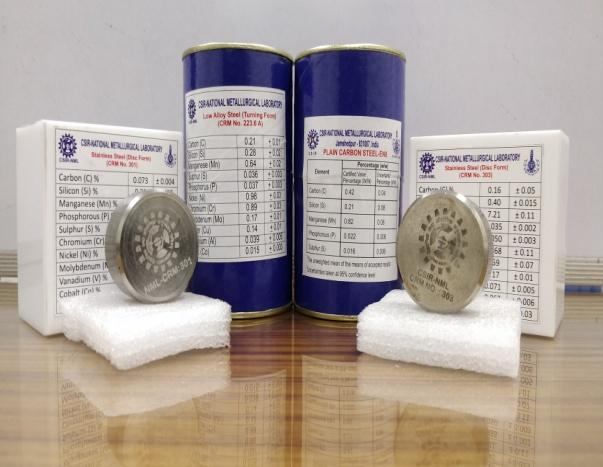Vent Filters vs. Vials: Which One Should You Pick?

Introduction
In the ever-evolving landscape of scientific research and analysis, the pursuit of accurate and reliable results is paramount. At the heart of this endeavor lies the intricate world of chromatography, where the selection of the right consumables and solutions can make all the difference. Among the myriad of components that play a crucial role in this domain, vent filters and vials stand out as two essential elements that demand careful consideration.
As a leading provider of chromatography consumables and solutions, IT Tech is committed to empowering labs and researchers with the knowledge and tools they need to achieve excellence. In this comprehensive guide, we delve into the intricacies of vent filters and vials, shedding light on their distinct functionalities, and equipping you with the insights necessary to make informed decisions that align with your lab's specific requirements.
Understanding Vent Filters: Safeguarding Purity and Integrity
Vent filters, also known as air filters or micro-filters, are designed to serve as sentinels, vigilantly guarding against the ingress of contaminants and particulates that could compromise the integrity of your chromatographic processes. These unassuming yet critical components play a pivotal role in maintaining the purity and accuracy of your results, ensuring that your analyses are conducted in a controlled and sterile environment.
Vent filters come in a diverse array of materials, pore sizes, and configurations, each tailored to cater to the unique demands of different applications and sample types. From the robust nylon and the chemically inert PTFE (polytetrafluoroethylene) to the highly efficient PES (polyethersulfone) and the versatile PVDF (polyvinylidene fluoride), the selection of the appropriate vent filter material is a critical consideration.

The pore size of vent filters is another crucial factor that can significantly impact their performance. Smaller pore sizes offer enhanced filtration capabilities, effectively blocking even the most minute particulates from entering your system. However, it's essential to strike a balance, as excessively small pore sizes may impede the necessary airflow, potentially compromising the overall efficiency of your chromatographic processes.
Vials: The Custodians of Sample Integrity
While vent filters safeguard against external contaminants, vials play an equally vital role in preserving the integrity and consistency of your samples throughout the analytical process. These compact vessels serve as the primary containers for holding and storing samples, ensuring their protection and stability from the initial collection stage to the final analysis.
Chromatography vials come in a wide array of sizes, shapes, and closure types, each designed to accommodate different sample volumes and specific requirements. From the standard screw-top vials to the secure crimp-top varieties, and beyond, the selection of the appropriate vial can significantly impact the overall performance and reliability of your chromatographic analyses.

Material compatibility is a key consideration when choosing vials for your chromatographic applications. Glass vials offer superior chemical resistance and inertness, making them ideal for samples that may interact with or leach from certain plastics. On the other hand, plastic vials, such as those made from polypropylene or cyclic olefin copolymers (COC), provide excellent clarity, durability, and cost-effectiveness, making them suitable for a wide range of applications.
Key Factors to Consider: Navigating the Decision
When faced with the choice between vent filters and vials for your chromatography applications, a multitude of factors must be carefully weighed to ensure optimal performance and accurate results. Here are some key considerations to guide your decision-making process:
1. Application and Sample Type The specific application and the nature of your samples will play a pivotal role in determining the most suitable choice. For instance, vent filters with smaller pore sizes may be better suited for applications involving volatile or hazardous samples, where the risk of airborne contaminants is heightened. Conversely, vials with specialized closure types, such as crimp-tops or screw-tops with septa, may be required for certain sample types or storage conditions to ensure effective sealing and protection.
2. Compatibility and Inertness Ensuring the compatibility of your vent filters and vials with your samples and equipment is of paramount importance. The materials used in their construction, as well as any coatings or treatments, can greatly influence the interaction with your samples and the overall performance of your chromatographic system. Incompatibility can lead to sample degradation, leaching of unwanted substances, or equipment malfunctions, ultimately compromising the reliability of your results.
3. Purity and Contamination Risks Maintaining the purity of your samples is a fundamental requirement in chromatography. Vent filters and vials must be carefully selected to minimize the risk of introducing contaminants or leaching unwanted substances into your samples, which could potentially skew your analytical results and undermine the integrity of your research.
4. Ease of Use and Workflow Integration The practical aspects of using vent filters and vials, such as ease of handling, compatibility with automated systems, and seamless integration into your existing lab workflow, should not be overlooked. These factors can significantly impact the efficiency and productivity of your operations, ultimately contributing to the overall success of your chromatographic analyses.
5. Quality and Reliability Consistent quality and reliable performance are non-negotiable requirements for any lab equipment and consumables. Choosing vent filters and vials from a reputable supplier with a proven track record of quality and customer support can provide peace of mind and help ensure the success of your chromatographic analyses over the long term.
Vent Filters vs. Vials: Finding the Optimal Balance
The decision between vent filters and vials is not a matter of an either-or scenario; rather, it often requires a judicious combination of both components to achieve optimal results in your chromatographic applications. In some cases, the use of vent filters may be essential to maintain a contaminant-free environment, while in others, the primary focus may be on selecting the appropriate vials to ensure sample integrity and stability.

When it comes to vent filters, consider the material, pore size, and configuration that best aligns with your specific needs. For vials, factors such as size, closure type, and material compatibility should be carefully evaluated based on your sample characteristics and analytical requirements.
By taking the time to understand the unique strengths and limitations of both vent filters and vials, and by carefully considering the key factors outlined above, you can make informed decisions that optimize your chromatographic processes and contribute to the overall success of your scientific research and discovery.
Chromatography Consumables: Diving Deeper
While vent filters and vials are undoubtedly critical components in the realm of chromatography, they represent just a fraction of the vast array of consumables and solutions that IT Tech offers to support your lab's success. Our comprehensive portfolio encompasses a wide range of products tailored to meet the diverse needs of various chromatographic techniques, including:
1. HPLC (High-Performance Liquid Chromatography) For HPLC applications, IT Tech provides a comprehensive selection of consumables, including HPLC vials, caps, and closures, as well as specialized HPLC columns, mobile phase filters, and sample preparation tools. Our HPLC solutions are designed to ensure optimal separation, reproducibility, and precision in your analyses.
2. GC (Gas Chromatography) In the realm of GC, IT Tech offers a diverse range of consumables, including GC vials, caps, septa, liners, and specialized GC columns. Our GC solutions are engineered to facilitate accurate and efficient separation and detection of volatile compounds, ensuring reliable and consistent results.
3. SPE (Solid-Phase Extraction) Solid-Phase Extraction (SPE) is a powerful sample preparation technique, and IT Tech provides a comprehensive selection of SPE cartridges, disks, and plates, catering4. Sample Handling and Storage Proper sample handling and storage are crucial aspects of any analytical workflow. IT Tech offers a diverse range of consumables to support these critical processes, including vial racks, storage boxes, sample transport containers, and specialized materials for sample derivatization and preservation.
5. Filtration and Sample Preparation Filtration and sample preparation are essential steps in ensuring accurate and reliable chromatographic analyses. IT Tech's portfolio includes a wide variety of syringe filters, membrane filters, and sample preparation kits tailored to specific applications, matrix types, and analytical techniques.
6. Accessories and Consumables In addition to the core consumables, IT Tech provides a comprehensive selection of accessories and ancillary products to support your chromatographic workflows. These include syringes, needles, tubing, fittings, and specialized tools for instrument maintenance and troubleshooting.
Ensuring Quality and Compliance

At IT Tech, we understand that quality and compliance are paramount in the scientific industry. That's why our entire range of chromatography consumables and solutions is manufactured under stringent quality controls and adheres to the highest industry standards.
Our products are rigorously tested and validated to ensure they meet or exceed the required specifications, providing you with the confidence and peace of mind necessary to conduct your analyses with precision and reliability.
Furthermore, IT Tech's commitment to quality extends beyond our products. Our team of dedicated experts is available to provide guidance and support, ensuring that you have access to the knowledge and resources needed to optimize your chromatographic workflows and achieve the best possible results.
Conclusion: Partnering for Success
In the ever-evolving landscape of scientific research and analysis, the choice of the right chromatography consumables and solutions can be a defining factor in achieving accurate, reliable, and reproducible results. At IT Tech, we recognize the vital role that vent filters and vials play in this intricate ecosystem, and our mission is to empower you with the knowledge and tools necessary to make informed decisions that align with your lab's unique requirements.
By leveraging our extensive portfolio of chromatography consumables, coupled with our deep expertise and unwavering commitment to quality, we strive to be your trusted partner in navigating the complexities of the chromatography landscape. Our team of knowledgeable professionals is dedicated to providing you with personalized support, ensuring that you have access to the resources and guidance you need to optimize your workflows, enhance your productivity, and drive scientific discovery.
To learn more about our comprehensive range of chromatography consumables and solutions, or to discuss your specific requirements, we invite you to visit our website or contact us directly. Together, we can unlock the full potential of your chromatographic analyses and propel your scientific endeavors to new heights.
Subscribe to our newsletter
Stay updated with IT-Tech Insights
Related posts
Check out other IT- Tech Scientific Resources

Selecting CRMs for your analytical method
Selecting the right CRMs (Certified Reference Materials) is a critical step in establishing a robust analytical method. This article provides insights into key factors to consider when choosing CRMs, including purity, traceability, and suitability for your specific application. Understanding the role of CRMs in quality control and method validation is essential for achieving accurate and reliable results. We discuss the importance of selecting CRMs from reputable suppliers who adhere to strict quality standards and provide comprehensive documentation. By carefully considering these factors, you can ensure that your chosen CRMs meet your specific needs and contribute to the overall success of your analytical workflow.

Multi-component standard mixes vs single standards
When conducting research, accurate calibration and validation are crucial. This often involves using chemical standards or certified reference materials (CRMs). Two common approaches are multi-component standard mixes and single standards. Multi-component mixes offer convenience and cost-effectiveness, while single standards provide greater flexibility and control. This article delves into the advantages and disadvantages of each approach, helping you determine the best option for your specific research needs. We discuss factors such as accuracy, traceability, and cost, providing insights to ensure reliable and accurate results in your experiments.

Understanding certified reference materials (CRMs)
Certified reference materials (CRMs) are highly characterized materials with known and certified properties. They play a crucial role in analytical chemistry by providing a reference point for calibrating instruments, validating analytical methods, and ensuring the accuracy of measurements. CRMs are essential for quality control, research, and regulatory compliance. This article explores the importance of CRMs, their different types, and how they contribute to reliable and accurate analytical results. Discover how IT tech can provide you with a comprehensive range of Chemical Standards & CRMs to meet your specific needs.




























.png)



























































.png)
























